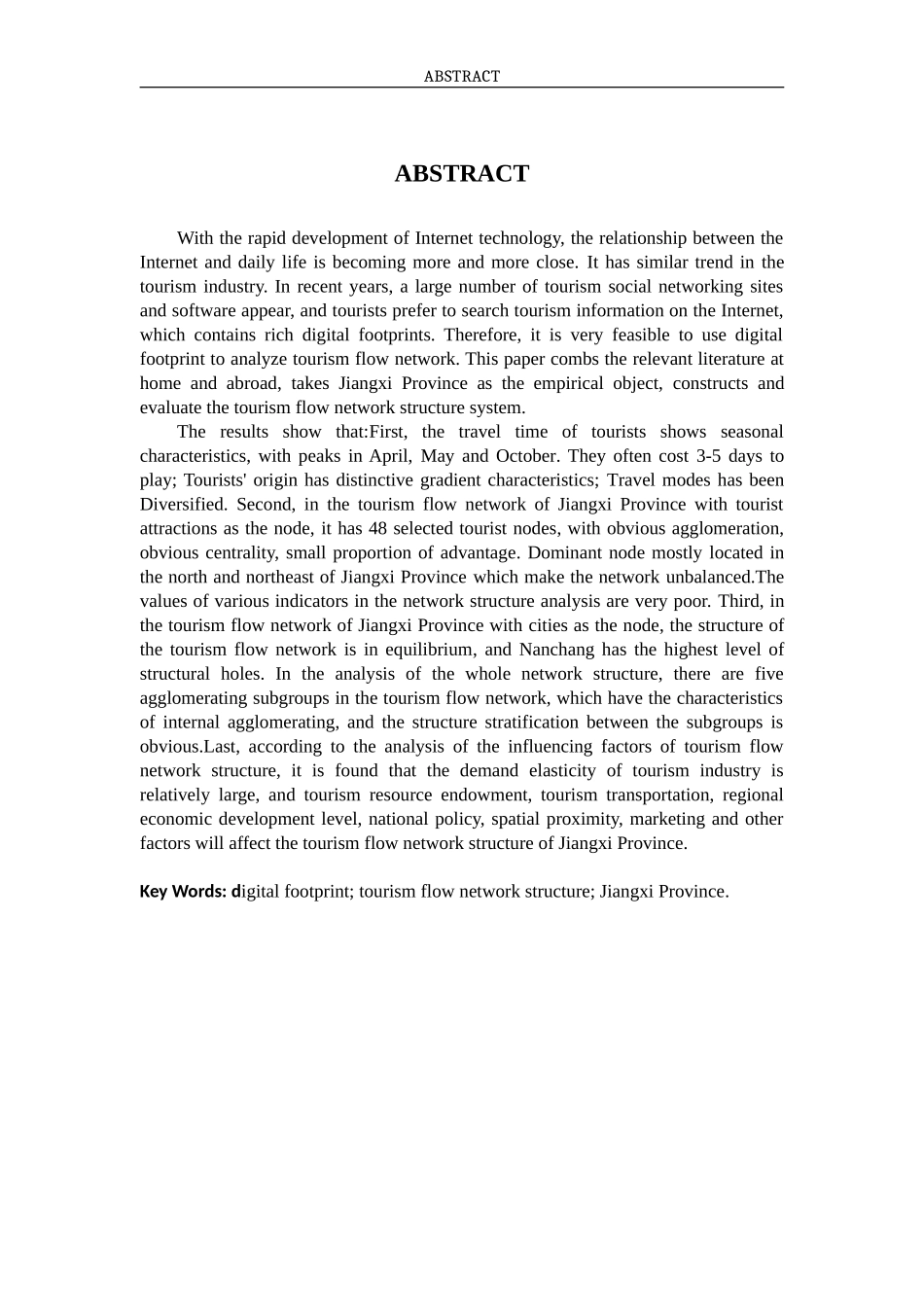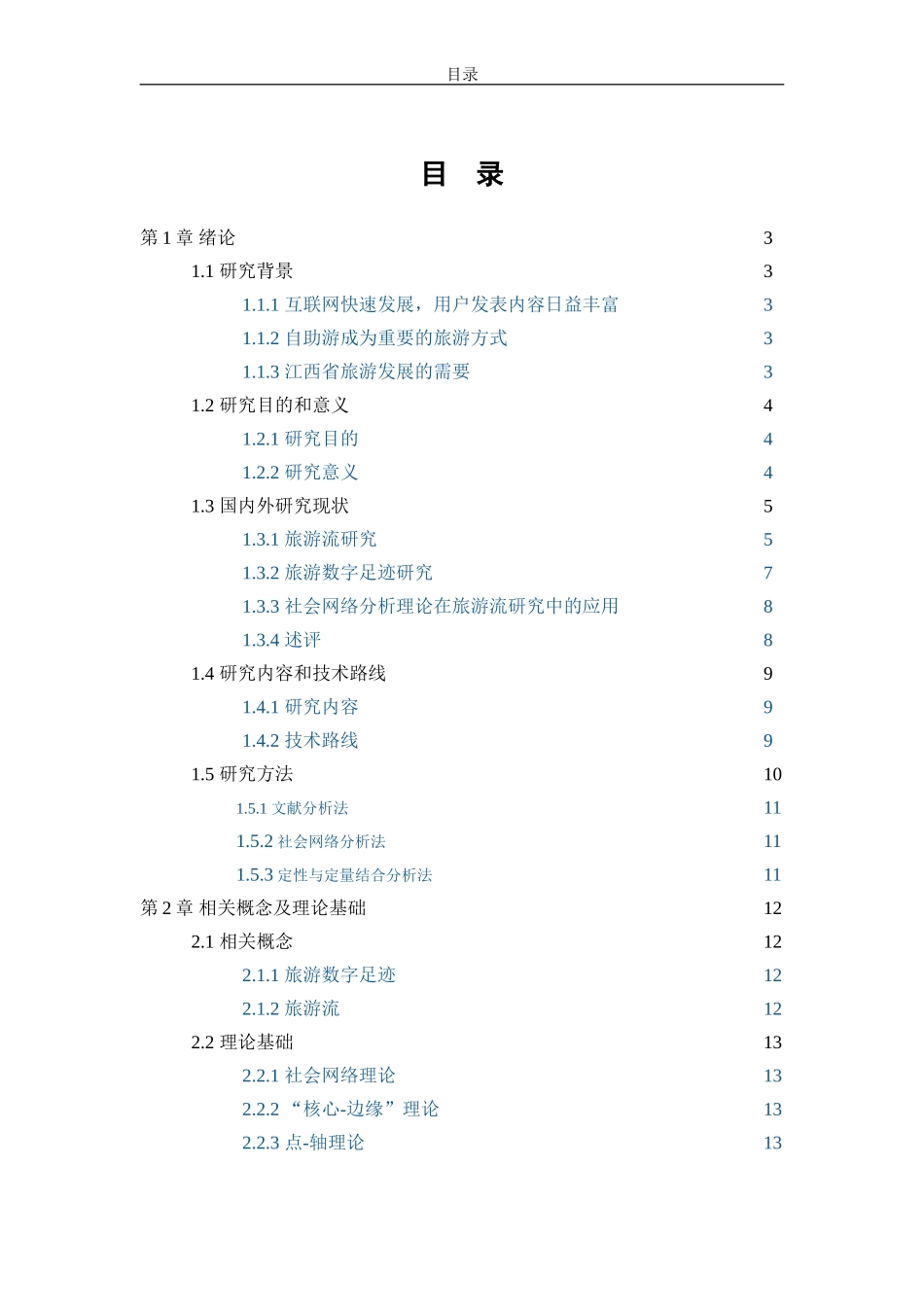摘要摘 要随着互联网技术的高速发展,互联网与日常生活的联系越发紧凑,在旅游行业中也呈现出旅游业与互联网高度融合的发展势头。近年来,大量的旅游社交网站、软件出现在大众视野中,越来越多的游客偏好在互联网上搜索旅游信息,这些信息中蕴含着丰富的数字足迹。因此,利用数字足迹研究旅游流网络极具可行性。本文梳理了国内外相关文献,归整了相关理论成果,以江西省为实证对象,抓取旅游社交网站中蕴含的数字足迹,构建了江西省旅游流网络结构体系并对其特征进行研究。研究结果表明:(1)从时间上看,游客量在 4 月、5 月、10 月出现峰值,游玩天数一般为 3-5 天,游客来源地具有鲜明梯度特征;出行方式逐渐多样化;游客旅游景点偏好的前三名依次为婺源、庐山和滕王阁。(2)以 48 个旅游景点为节点的江西省旅游流网络中,网络密度小,中心性明显,优势节点占比小,多位于赣北和赣东北地区的旅游景点,全省旅游节点呈不均衡分布,网络效果很差。(3)以 11 个地级市为节点的江西省旅游流网络结构包含 5 个凝聚子群,子群之间的结构分层现象明显。其中南昌的各指标值均在前列,结构洞水平最高,在整个网络中具有绝对优势。(4)根据旅游流网络结构影响因素分析,发现旅游资源禀赋、旅游交通、区域经济发展水平、国家政策、空间邻近、营销等因素都会对江西省旅游流网络结构等产生影响。关键词:数字足迹;旅游流网络结构;江西省;社会网络分析ABSTRACTABSTRACTWith the rapid development of Internet technology, the relationship between the Internet and daily life is becoming more and more close. It has similar trend in the tourism industry. In recent years, a large number of tourism social networking sites and software appear, and tourists prefer to search tourism information on the Internet, which contains rich digital footprints. Therefore, it is very feasible to use digital footprint to analyze tourism flow network. This paper combs the relevant literature at home and abroad, takes Jiangxi Province as the empirical object, constructs and evaluate the tourism flow network structure system. The results show that:First, the travel time of tourists sh...












